This piece is based on the panel about Streaming & Algorithms I organized with shesaid.so France during the JIRAFE event put together by the Réseau MAP in Paris, where I interviewed Elisa Gilles, Data Scientist Manager at Deezer, and Milena Taieb, Global Head of Trade Marketing and Partnerships at Believe, about music discoverability on digital streaming platforms.
The idea
Understanding how music discovery algorithms work and including this knowledge in marketing plans can boost a song release campaign.
How it works
Algorithms can amplify momentum about a song or artist. To best leverage them, 1/ get metadata right when distributing songs to streaming platforms, so that classification is accurate; 2/ engage a community of early fans to help recommender systems understand for whom the song is the best fit.
Algorithms are at the heart of streaming services. Catalogs of modern streaming services now exceed 70M tracks, and recommendation algorithms have become essential tools that help users navigate this virtually unlimited pool of artists and songs. The most prominent examples can be found in systems powering personalized playlists like Spotify’s Discover Weekly and Release Radar, or Deezer Flow; but streaming personalization extends far beyond such discovery features. Home section layouts on most streaming platforms are personalized, and so are the search results. Algorithms are also used to pitch users similar content, determining which artists or songs are showcased next to the ones you are currently looking at. YouTube Chief Product Officer Neal Mohan shared at CES 2018 that recommendations are responsible for about 70 percent of the total time users spend on Youtube.
Recommendation algorithms are now at the heart of digital music consumption, and so I could not stress this enough: to optimize artist visibility in the modern streaming landscape, it’s crucial to understand how these algorithms work.
From where do people stream?
As Milena Taieb, Global Head of Trade Marketing and Partnership at Believe, has pointed out during our interview: 68% of total streams are user-driven — streaming from their library, their own playlists or searching for their favorite albums or artists. 14% of streams are algorithmic driven, and 10% editorial driven. This is far from Youtube's 70% algorithm-mediated consumption share, but that doesn’t make algorithms any less important. To get added to the user's library or personal playlist, the artist needs to get discovered by said user first — and it’s editorial and algorithmic playlists that will often help get them there.


The fact that most people stream from their libraries and personal playlists doesn’t mean that that is where you should concentrate all of your attention. Yes, the goal is to move the listener from “passive” streams (originating from algorithmic or editorial playlists) to “active”, user-driven streaming — but in most cases you can’t have the latter without the former. Put simply, to get user-driven streams, you need to build up algorithmic discovery first.
A side note on COVID-19: lockdown had little impact on those discovery patterns. Elisa Gilles, Data Scientist Manager at Deezer, told me that she noticed a peak of kids content and live radio consumption, while the usual peaks during commute horse evened out across the day. However, overall behavior regarding recommendations didn’t change much. Overall streaming was down to about 15 to 20% for the first few weeks, but soon returned to normal volumes.
So, what influences a song's discoverability and its chances to be recommended?
First of all, let me explain how recommendation systems work. There are two main ways to build recommendations for a user:
- By content similarity — “I recommend that you listen to an emerging hip-hop artist because you listen to a lot of hip-hop”
- By behavioral similarity — “I recommend that you listen to Tones & I because most users who listen to the same artists you do also listen to Tones & I”
The latter is also known as “The Netflix” approach or collaborative filtering.

This graph above is an example from the music discovery team at Spotify, looking at which artists are most commonly added in playlists together, and then using these probabilities to drive recommendation.
Most streaming platforms use a combination of both content and behavioral approaches to power their recommendation systems. However, the exact way they are able to describe music and how they analyze listening patterns, remains the “secret recipe” of each respective recommendation engine.
How to optimize for content similarity?
Content similarity is usually more important when it comes to freshly released songs that don’t have much in terms of streaming behaviour and playlist additions for the platform to analyze. This is known as the “cold start” problem — in order to overcome it, the artists are asked to fill in the initial information about their songs when they submit music to distributors (i.e. metadata): title, artist, label, main genre, secondary genre, etc. Filling these fields as accurately as possible is very important, as this data will be a basis for the initial song classification across streaming services.

That said, streaming services usually don’t rely only on the metadata alone. Broad genre tags like “Pop” or “Dance” may take on different meanings depending on the context — and so streaming platforms develop their own content analysis systems to expand on that basic data. Such tools allow them to analyze raw audio files coupled with provided metadata to assign more narrow content tags and power initial content similarity recommendation.
So, making sure the song is properly described, and that all possible data is provided — including lyrics and even label name, can come a long way when it comes to helping your music get discovered. Making sure metadata is right is Discoverability 101.
How to optimize for behavioral similarity?
As I’ve mentioned above, a behavioral similarity approach only works when there are some listens, searches, playlists additions, saves and other consumption patterns for the algorithm to analyze. But how can you leverage that to amplify the artist’s visibility across streaming platforms?
Well, the first step is to identify which artists and songs have affinity with your music. In which playlists does your song belong? Who are other artists featured in those playlists? The chances are that users who like those artists and listen to those playlists will also dig your music. The more users who like your songs listen to other similar songs and artists, the more relevant patterns there are for the algorithm to analyze. The more patterns there are for an algorithm to analyze, the better it will get at matching your music with your potential audience.
That means, for instance, that there is next to no point in paying for random streams. They won’t help the algorithm to qualify your song and recommend it to the right users — on the contrary, they will establish fake consumption patterns that will only hurt your discoverability.
Instead, what works is:
- getting played and added to playlists by fans who enjoy your music and your style: they will also listen to other artists similar to you, and help the algorithm understand where you belong;
- getting on curated playlists that are focused on your style or genre.
As you can see, optimizing for editorial and algorithmic playlists works really well together. Beware, though — editorial playlists have to be focused on your genre, especially if you are an emerging artist who’s just starting to build your fan base. Getting featured in a huge editorial playlist — something like Spotify’s “New Music Friday”, for example — can be a double edge sword. Such discovery playlists blend many artists that may not have much in common, at least sonically, with your music. In a way, too much exposure that comes too soon — that is, before your music is properly qualified — can lead the algorithm to push it semi-randomly to unqualified users, which ought to get you bad skip rates and lower your song long-term potential.
Algorithms are becoming the primary source of music discovery. The latest research from MRC Data/Nielsen Music highlights that 62% of people surveyed said streaming services are among their top music discovery sources while “just” 54% named friends and family. These algorithms are not artificial though, they work by analyzing how fans listen to your music. Building an engaged and active community around your artists and their music is still the key to running a successful and sustainable music career. These fans, even if their number is small, are your biggest resource that will help you spread the word about your music and find new listeners. Beyond that, they are the ones who will help algorithms pick up on your momentum and amplify it through the recommender systems.
Dig Deeper
If you’re curious to learn more about how you can find the right strategies (and right spaces) to promote your artists, check out the piece I wrote for Cherie Hu’s Water & Music on how to use data to market new releases, which includes a section on how to find relevant playlists to target in your pitching campaign. To dig even deeper into understanding how your music is classified, Bas Grasmayer and Carlo Kiksen put together a tutorial to learn how the Spotify AI categorises your music and check out your song audio analysis.















